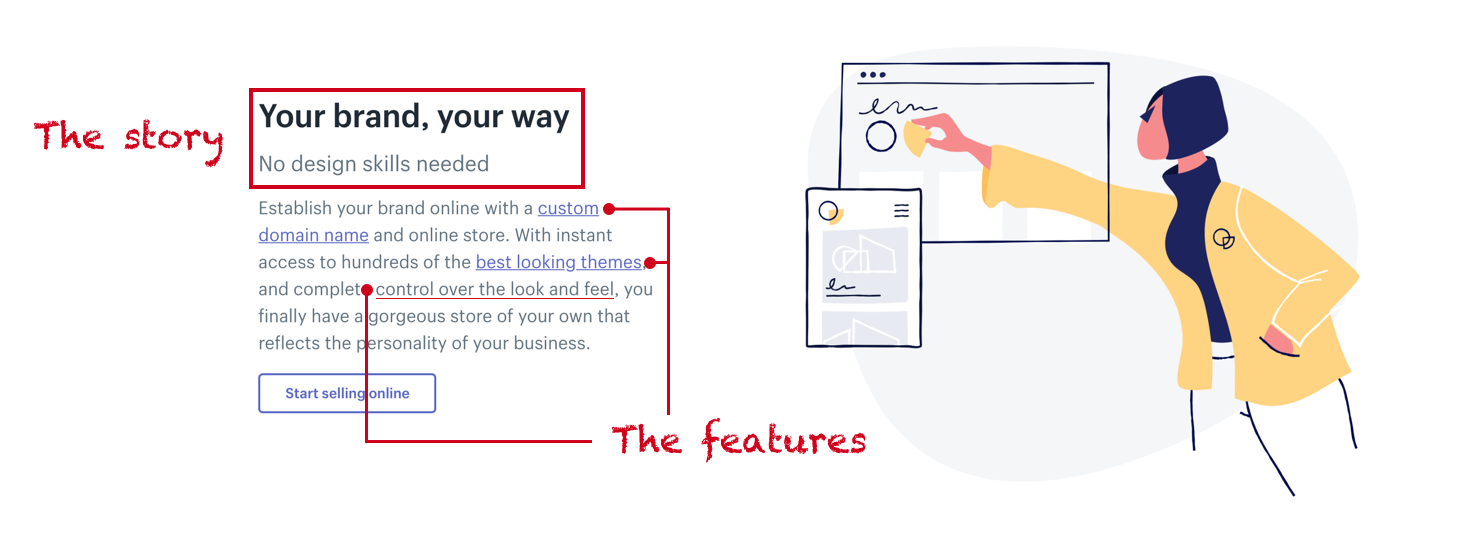Build stories, not features
No one gets excited at the idea of having another set of credentials to manage. Being safe is the story, and having a password is the feature.

We all want our data to be protected. And one way to solve that problem is to have a password-protected account, but no one gets excited at the idea of having another set of credentials to manage. Being safe is the story, and having a password is the feature.
Stories vs. Features
Almost every capability in applications can be described as a feature. You create an account, add content, connect with your friends, etc. Apps are made of dozens, hundreds, or even thousands of pieces that interact with each other to help users achieve particular goals.
Yet, it is important to think at an abstract level if we want to be successful at delivering great experiences. We need to frame our vision high enough that there can be many possible answers to the problems we're trying to solve. And those answers will end up being the features that we implement.
If we look at Shopify for instance, they do an excellent job on their website of emphasizing their stories, and then listing the related features beneath.

- The story: you can control your brand
- The features: custom domains, themes, customizable CSS
A simple way to move up the ladder when you have a feature in mind is to use the 5 Whys. It'll naturally force you to go back to the root issue that you need to address.
Why it matters
We always have a plan. But many things can delay or halt projects. It might be poor management, some unforeseen technical constraint, or difficulties in syncing multiple streams of work. So, you'll need flexibility if you want to keep delivering value to your users. If you're using agile methodologies, it will help you realize faster when you're off-track. But that's only helpful if you can then act on that information.
Having an overarching story guiding your roadmap will make it easier to change scope or switch priorities. In the case of Shopify one goal is to help customers bring their brand with them. There's plenty to chose from if one particular feature happens to be more complicated than expected. You can still fulfill the original goal while changing the set of capabilities delivered to the users.
Thinking in terms of stories will also help you be more creative in your solutions. Today we can just look at our phones to unlock them - we use our faces as passwords, and there's no need to type things in anymore. Of course, we had to wait for the right technology to be available. But it is also because someone took a higher perspective to look at the problem.
Stories are powerful
At Squadlytics we spent a lot of time early on to define what our purpose was: to help teams keep the pulse on their projects. We shipped some pretty cool things while going through our first iteration. But we soon realized that it was not going in the right direction.
I'm quite sure that without that vision we would have been stuck with our heads down, shipping features after features, and creating a solution in search of a problem. Instead, we were able to go back to the drawing board and design a much better platform.
Stories will clarify your message, and narratives are far more persuasive and inspiring than a long list of capabilities.

